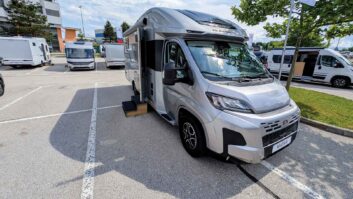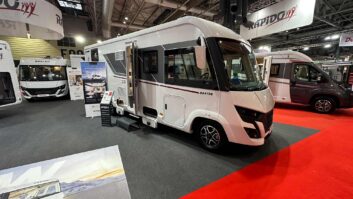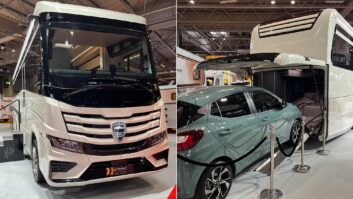The Swift Group has been building leisure vehicles for a long time now, with 2024 marking 60 years of the brand.
Nowadays, it is known as the UK’s biggest producer of motorhomes and trailer caravans and one of the best motorhome makes, as seen at our 2024 Owner Satisfaction Awards, where the brand was awarded three silver medals
The popularity of Swift was also seen at the Practical Motorhome Awards 2024 – here, the sub-range of overcab models introduced to the Ford Transit-based Voyager range proved a hit with our judging panel, winning two categories, including the best 4 berth motorhome.
Yet, believe it or not, some of us can (just) remember a time when Swift products were not on the dealers’ forecourts…because they’d yet to start production. Here, I’m taking a look back at 60 years of Swift, charting its rise to becoming such a major player in the leisure vehicle sphere.
The early days of Swift
Keen trailer caravanners Ken Smith and Ken Day decided to have a go at building one themselves. The result, the 1964 Ten, was sold for £289 to finance their fledgling leisure vehicle business.

The following year, Ken Smith became the sole owner and production commenced at the new premises in Hull. Then in 1969, the firm made another move to Cottingham, their home today. Sadly, Ken Smith passed away in 1972. His wife, Joan, and son Peter took over the helm.
Wind tunnel testing and computer modelling commenced in the 1980s, and by late 1984, Swift was making its own moulded GRP panels. This was around the time it decided
to move into coachbuilt motorhome production. Several approaches were considered, with the Bremen Mercedes an early choice for a prototype. Note how the rear three-quarter view resembles Swift trailer vans of the time.

Introducing the Kon-Tiki
Further research suggested that the Fiat Ducato/Talbot Express Al-Ko underpinnings might be more suitable and they were duly chosen for the brand’s first motorhome range.
This was named after the Kon-Tiki, Norwegian explorer Thor Heyerdahl’s balsa wood raft, on which he crossed the Pacific in 1947. Production commenced for the 1985 model year and shown here is one of the very early 600/6 variants. It was photographed quite recently and had been resprayed.

Swift’s expertise at GRP mouldings has kept the Kon-Tiki fresh for decades. In fact, it is the longest running UK-built motorhome range in continuous production, one of the features that saw us induct the Kon-Tiki into the Practical Motorhome Hall of Fame. Other examples include this 1992 K-T 640 and the tandem-axle 2008 K-T 669.

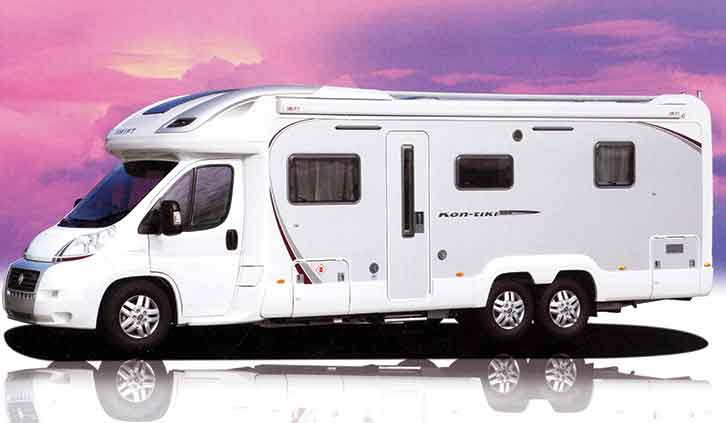
Moving to the VW base vehicle
For decades, Swift has chosen Fiat Ducato as its default base vehicle for high-top panel van conversions and coachbuilt conversions. This wasn’t always the case, however: in the mid-1990s, models on the VW Transporter were in production. Shown here are the (first-generation) Carrera and the Swift Royale 550, both from 1995. The modern Carrera has come a long way, with our review of the Swift Carrera 144 giving you an insight into what a modern model offers.

Swift also produced variants of the Gazelle coachbuilt on VW LT chassis-cabs. It was rumoured the VW Transporter might return for Swift’s Monza camper, but Ford’s Transit Custom trumped it.
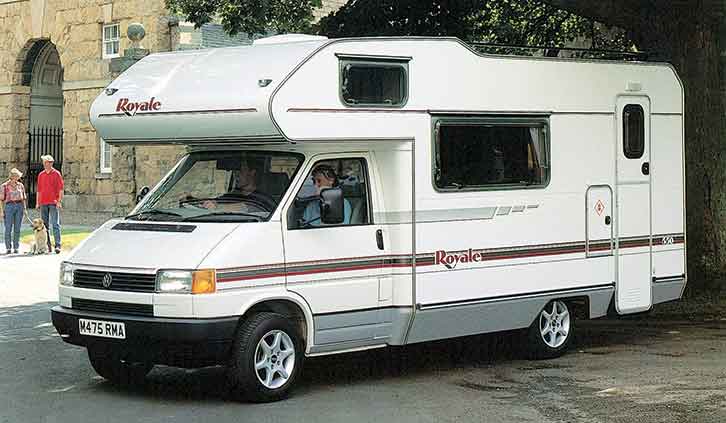
The launch of the Capri and the Sundance
Swift’s management has been keen to emphasise the firm’s desire to attract younger buyers to the market, and young families remain a perennial focus of attention.
These potential purchasers have always been less likely to be able to afford a Kon-Tiki, and in 1991, Swift launched the Capri, a value-for-money coachbuilt range. This sold well, but was phased out in the mid-1990s, when the X/44 Ducato was launched. The Sundance was its replacement.

Range drift meant the entry-level Sundance became so well equipped (and more expensive), there was room for a new VFM range – monikered Escape. Shown here is a very early 2009 Escape. The blue cab was phased out not long after… pity!

The brand’s current VFM range is monikered Edge (see what I make of buying a used Swift Edge), with Escape continuing as a popular mid-market offering.
Focusing on design
Swift should be proud of pushing design boundaries to produce new types of leisure vehicle, such as these three noteworthy examples. The first, the 1999 Bel-Air A-class (integral), took everybody by surprise at its launch.

Second, the 2015 Rio, with its fully opening back panel merging ‘inside’ and ‘outside’.

Third, an absolute bell-ringer of a newbie, the current Monza campervan, which gets our vote for ‘most appealing Swift newcomer likely to attract young families to our pastime.’ More recently, the Swift Trekker range launched, which is targeted at the more adventurous, which includes the Trekker X.

Now, the Swift Academy trains new entrants to the workforce and updates the skills of experienced employees – a splendid initiative. I wonder, what designs might this class of 2022 and future alumni come up with over the next six decades?

Swift isn’t the only brand to be celebrating an anniversary this year – I also took a look back at 60 years of Elddis, another of the UK’s most popular brands.
If you’ve enjoyed reading this article, why not get the latest news, reviews and features delivered direct to your door or inbox every month. Take advantage of our brilliant Practical Motorhome magazine SUBSCRIBERS’ OFFER and SIGN UP TO OUR NEWSLETTER for regular weekly updates on all things motorhome related.

